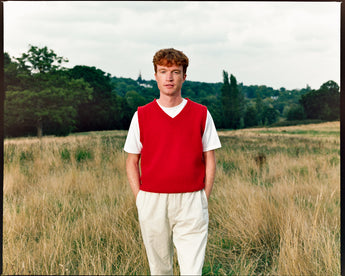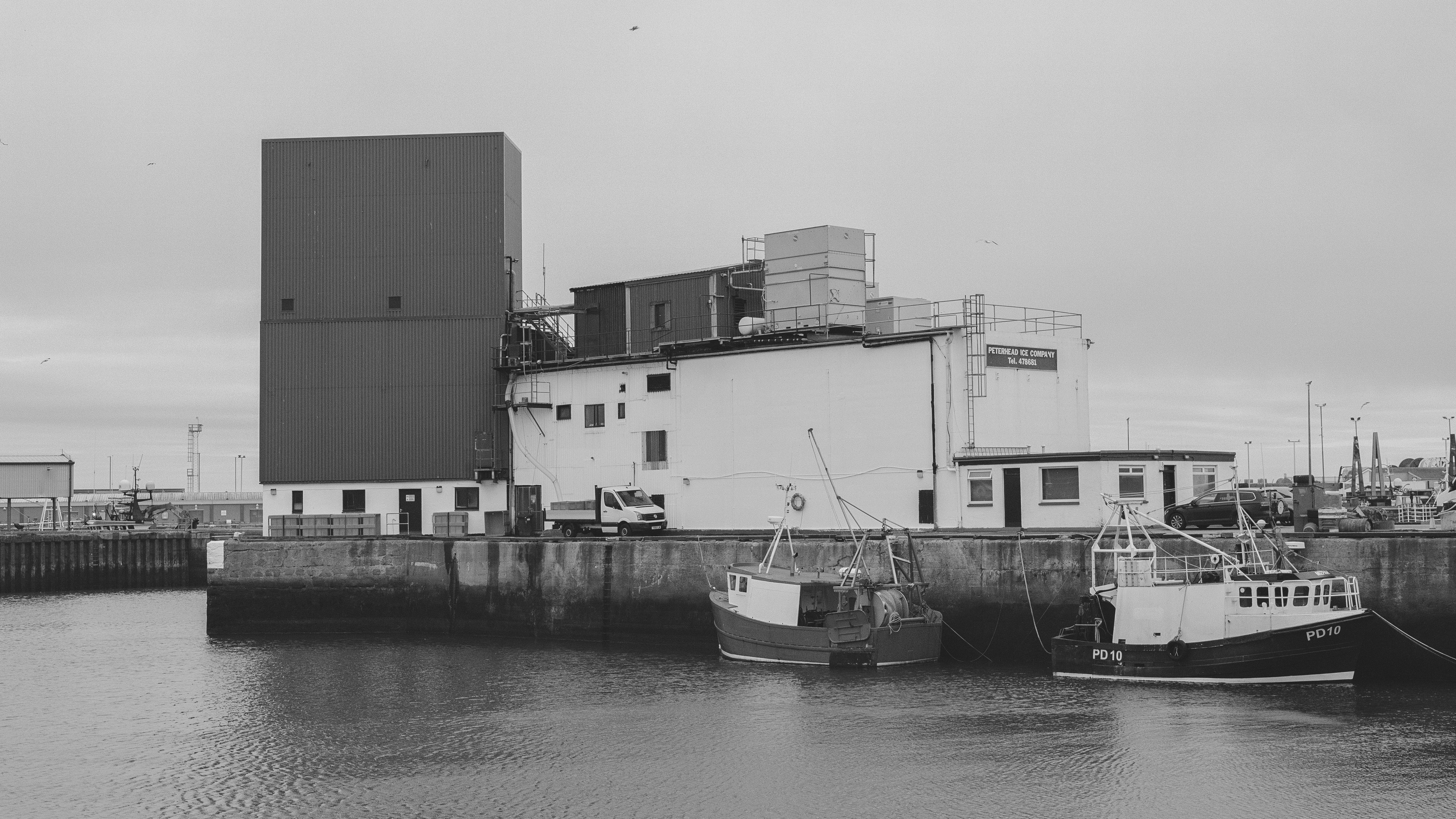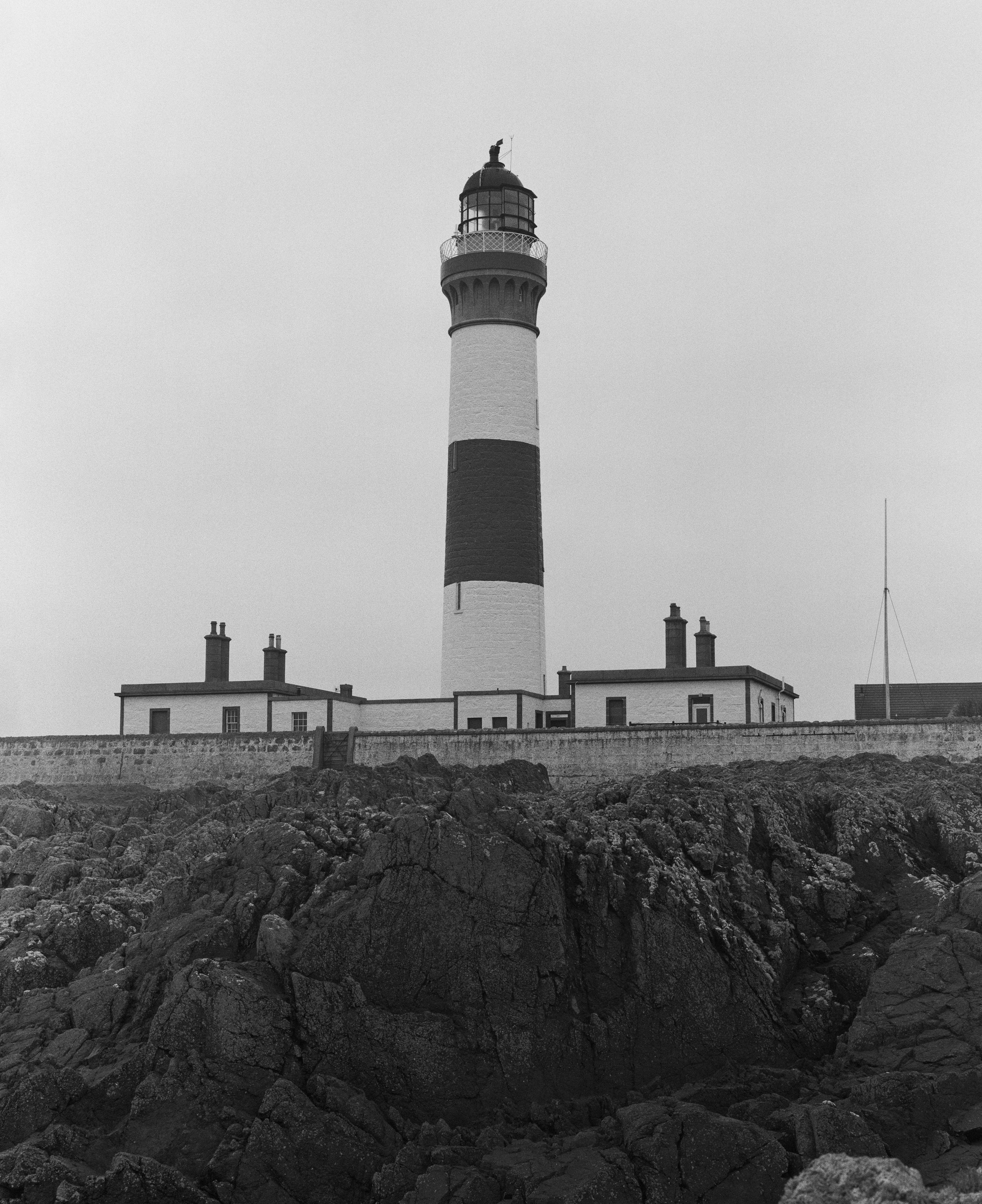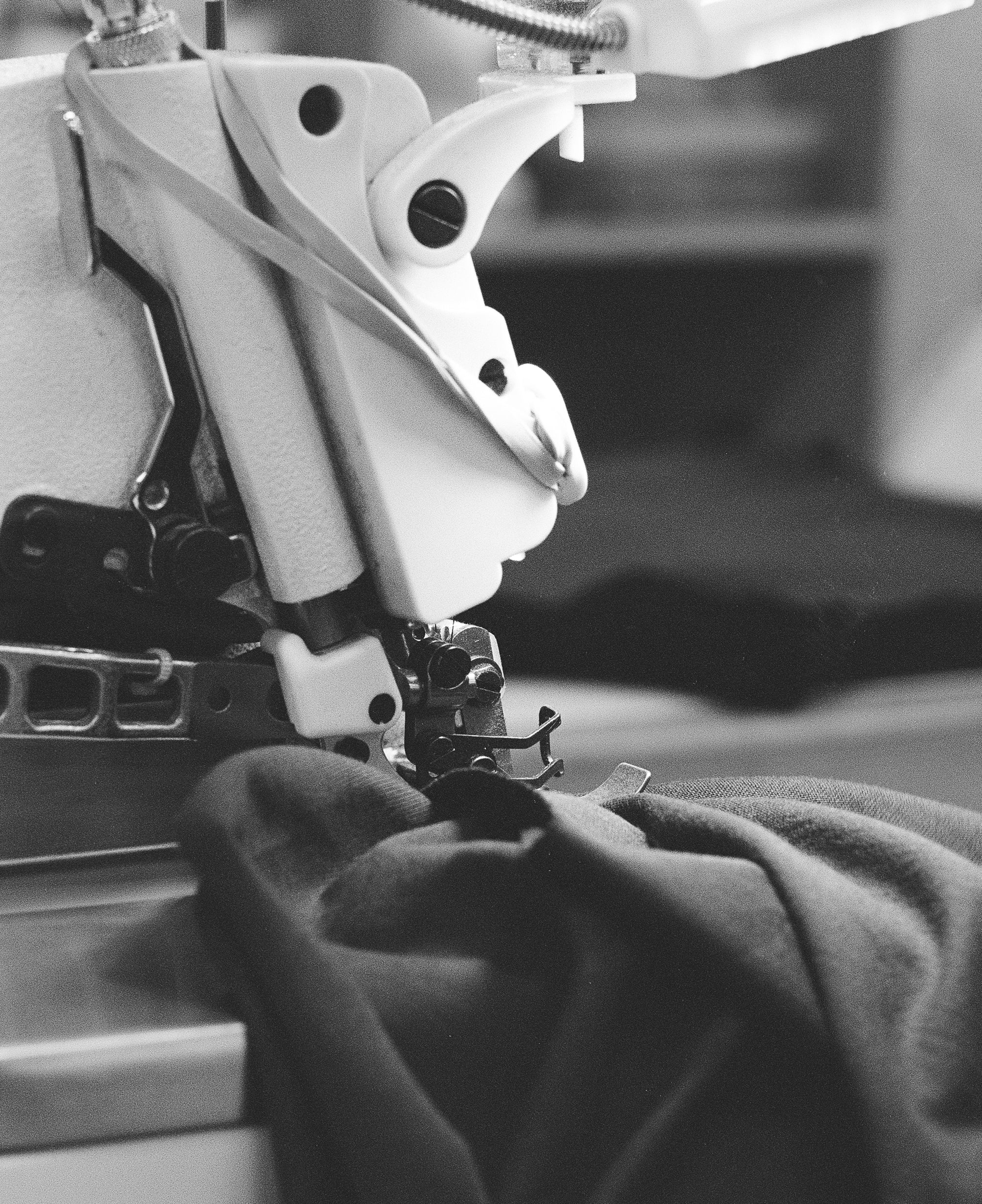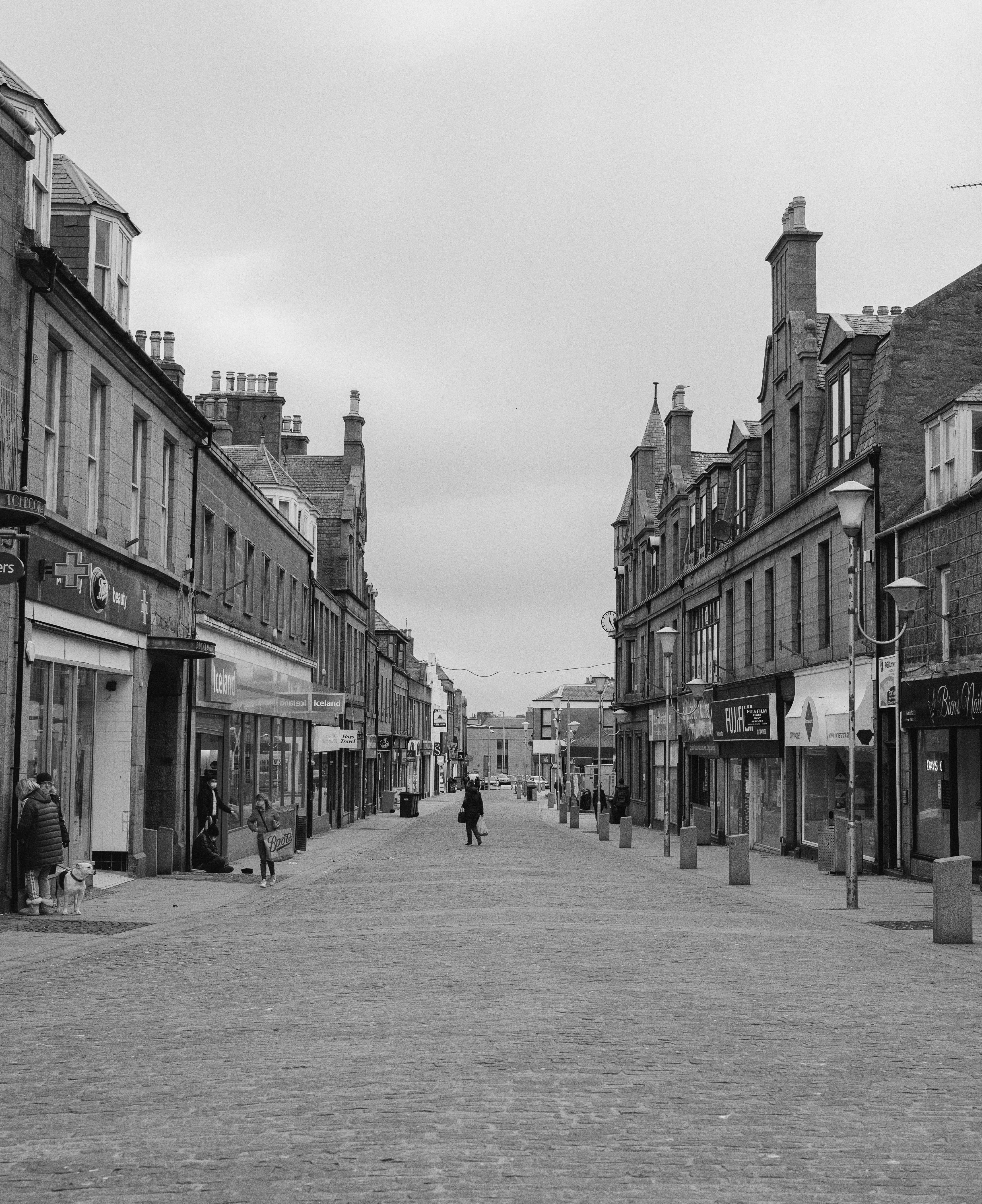On the map, the journey up to Aberdeenshire looks manageable. In reality? Not so much. By the time I reach Manchester and realize there’s another six and a half hours to go, it feels like I’ve barely made a dent. Edinburgh comes and goes, and before long, the landscape shifts. Out the window, through low-hanging clouds, I catch a glimpse of the Cairngorms - snow-capped and dramatic. If I had the time, I’d be tempted to take the A93 up towards Braemar for a hike. But with just one short day at my destination, I press on.
A Town Shaped by Its Environment
Waking up in the coastal town where our knitwear is made, it’s immediately clear that everything here is built with purpose. No frills, no unnecessary embellishments - just solid, enduring craftsmanship. The old fishermen’s homes, constructed from huge grey granite blocks, stand strong against the relentless North Sea storms. The harbor, a hub of activity for centuries, still plays a vital role in keeping the local community going. And then there’s the lighthouse, standing guard, guiding ships through the thick sea fog that often rolls in unannounced.
Even the town hall embodies this no-nonsense approach. There’s nothing overly grand about it - no towering columns or gilded details - but it commands respect. It’s central, tall, and built to last. The same could be said for most of the buildings here. At first glance, they’re understated. But look closer, and you’ll see the fine materials, the careful craftsmanship, the kind of construction that’s meant to stand the test of time. It’s easy to imagine them looking much the same 200 years ago as they do today.
Craftsmanship and Tradition
At the factory, I meet Susannah and John, the duo running the show. Susannah’s grandfather started making jumpers back in the 1920s, and I ask her how he made the switch from fishing to knitting. She laughs, explaining that for fishermen, knitwear wasn’t just clothing - it was survival gear. Wool is one of the only fabrics that keeps you warm even when wet, which made it essential for life on the Scottish coastal fishing boats. The region was rich in Shetland wool, so it was both practical and accessible. Even today, they still use Shetland wool in their knits.
For Simswear, we chose Merino Lambswool instead - softer than Shetland wool, but still packed with all the durability and warmth you’d want from a proper jumper.
The Beauty of Functionality
This part of Scotland has a quiet kind of beauty. It’s not showy, not in-your-face. It’s in the way things are built - with longevity, quality, and purpose. Not because of some design trend, but out of necessity. That mindset has found its way into the manufacturing of our Simswear jumpers. Every stitch, every fiber, is chosen to ensure they last, just like the buildings and traditions that have endured here for centuries.
As I leave, I think about my short but memorable visit. It’s reinforced everything I want Simswear to be - strong but subtle, prominent but understated, beautiful but functional. If we can live up to that, maybe, just maybe, we’ll stand the test of time, just like those old granite houses.
